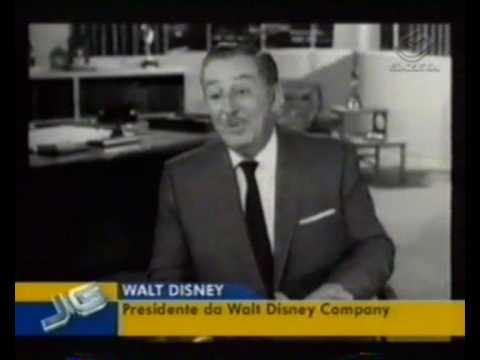How interpreters juggle two languages at once - Ewandro Magalhaes
Summary
TLDRThe video script recounts the misinterpretation of Khrushchev's 1956 statement, which escalated Cold War tensions, highlighting the importance of accurate translation. It explains the evolution of interpretation methods, from consecutive to simultaneous, and the rigorous training interpreters undergo to master language nuances. The script emphasizes the challenges interpreters face, their strategies to maintain precision under pressure, and the collaborative nature of their work to prevent miscommunication with potentially dire consequences.
Takeaways
- 🗣️ Khrushchev's 1956 statement 'My vas pokhoronim!' was mistranslated as 'We will bury you!', causing significant Cold War tension.
- 🌐 The true meaning of Khrushchev's words was that communism would outlast capitalism, a less threatening perspective.
- 🔍 The misinterpretation of Khrushchev's speech highlights the importance of accurate translation in international relations.
- 📚 Interpreters play a crucial role in overcoming language barriers and ensuring clear communication between different cultures.
- 🎧 The development of simultaneous interpretation after World War II revolutionized the way interpreters work, allowing for real-time translation.
- 👥 Interpreters undergo rigorous training, typically for two years, to expand their vocabulary and master the necessary skills for conference interpreting.
- 🎓 Interpreters learn to shadow speakers, paraphrase, and adjust their style, gradually building neural pathways for quick and accurate translation.
- 🔑 They develop techniques to manage speed, terminology, and accents, including using acronyms, generic terms, and referring to visual aids.
- 🤯 Interpreters must remain composed under pressure, often translating for large audiences in high-stakes settings like the UN General Assembly.
- 📝 Preparation is key for interpreters, who build glossaries, read extensively on topics, and review previous talks to manage the unpredictability of speeches.
- 👭 Interpreters typically work in pairs, with one translating and the other providing support, switching roles every 30 minutes to maintain concentration.
- ⚠️ The complexity of language and the potential for misinterpretation can have serious consequences, as noted by Margaret Atwood: 'War is what happens when language fails.'
Q & A
What did Nikita Khrushchev's original statement mean in the context of the 1956 diplomatic reception?
-Khrushchev's original statement 'My vas pokhoronim' should have been interpreted as 'We will live to see you buried,' implying that Communism would outlast Capitalism, rather than a direct threat to bury the Western Bloc.
How did the literal translation of Khrushchev's words impact the Cold War tensions?
-The literal translation 'We will bury you' was perceived as a direct threat, which heightened the Cold War tensions between the Soviet Union and the US, potentially setting back East/West relations by a decade.
Why is accurate translation crucial in diplomatic contexts?
-Accurate translation is crucial because misinterpretations can lead to severe misunderstandings and escalate tensions, as was the case with Khrushchev's statement, which could have led to catastrophic consequences.
What is the difference between consecutive and simultaneous interpretation?
-Consecutive interpretation involves pauses for the interpreter to translate, while simultaneous interpretation allows the interpreter to translate instantly into a microphone as the speaker continues, without pauses.
How long does it typically take to train a conference interpreter?
-It takes about two years of training for already fluent bilingual professionals to expand their vocabulary and master the necessary skills to become a conference interpreter.
What techniques do interpreters use to handle the challenge of speaking while listening?
-Interpreters use techniques such as shadowing, where they repeat a speaker's words in the same language to practice speaking while listening, and gradually move on to paraphrasing and making stylistic adjustments.
What strategies do interpreters employ to keep up with the speed of speech?
-Interpreters use strategies like resorting to acronyms for long names, choosing generic terms over specific ones, referring to visual aids, and leaving a term in the original language while searching for the most accurate equivalent.
How do interpreters maintain their composure in high-pressure situations?
-Interpreters maintain composure by preparing thoroughly for assignments, building glossaries, reading extensively about the subject matter, reviewing previous talks, and working in pairs to provide support and share the intense concentration required for simultaneous interpretation.
What is the role of the second interpreter in a pair during simultaneous interpretation?
-The second interpreter in a pair provides support by locating documents, looking up words, tracking down pertinent information, and giving the active interpreter a break every 30 minutes to maintain concentration.
Why is collaboration important for interpreters during simultaneous interpretation?
-Collaboration is important because simultaneous interpretation requires intense concentration, and working in pairs allows for role-switching every 30 minutes, ensuring that both interpreters can maintain high levels of accuracy and performance.
What did Margaret Atwood mean by 'War is what happens when language fails.' in the context of interpretation?
-Margaret Atwood's quote emphasizes the importance of accurate language translation in preventing conflicts. For conference interpreters, it serves as a reminder of their critical role in ensuring that language does not fail, thus avoiding potential misunderstandings that could lead to war.
Outlines

此内容仅限付费用户访问。 请升级后访问。
立即升级Mindmap

此内容仅限付费用户访问。 请升级后访问。
立即升级Keywords

此内容仅限付费用户访问。 请升级后访问。
立即升级Highlights

此内容仅限付费用户访问。 请升级后访问。
立即升级Transcripts

此内容仅限付费用户访问。 请升级后访问。
立即升级5.0 / 5 (0 votes)






